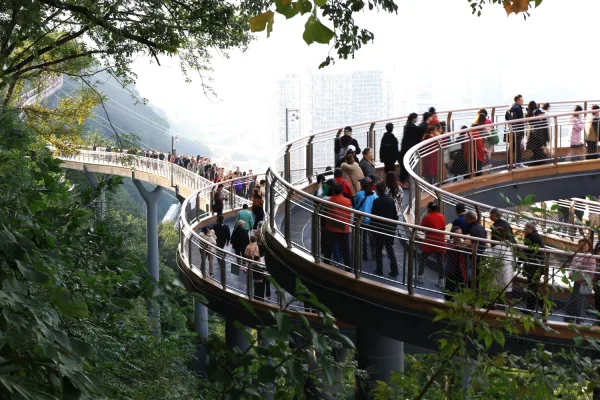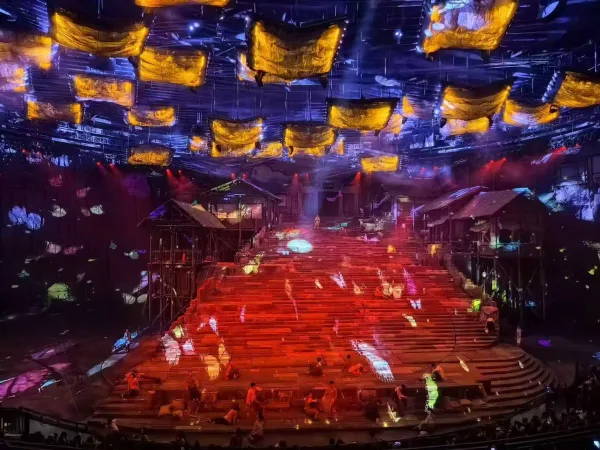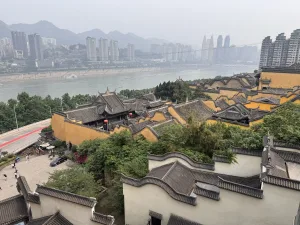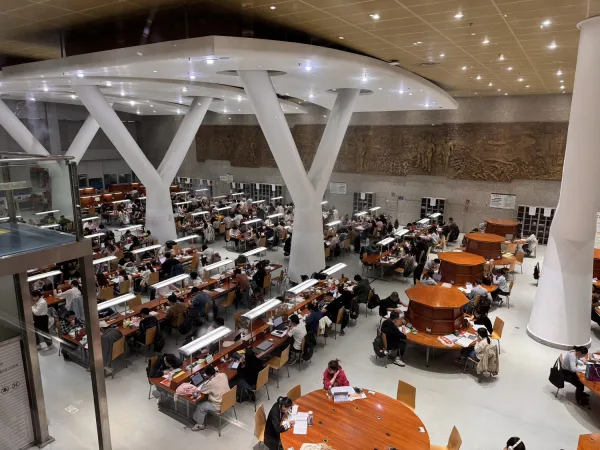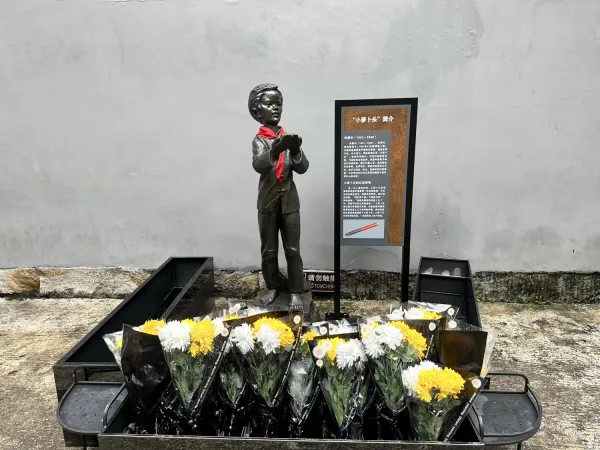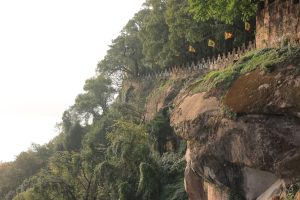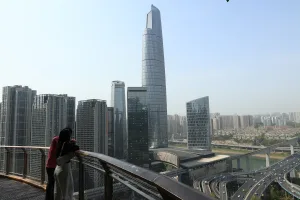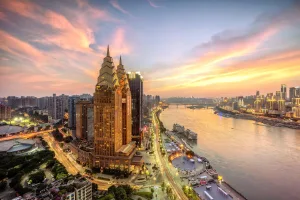Exploring Chongqing Urban Area: A 3 Day Itinerary
Ask me how many days you need to explore Chongqing, and I’ll tell you the truth: no amount of time feels sufficient.
As China’s largest municipality—sprawling far beyond Beijing, Shanghai, and Tianjin—this urban giant encompasses 38 districts, with some so distant they’re a 5-hour drive away on winding highways. Chongqing is a mesmerizing blend of futuristic skylines, mist-shrouded mountains, and fiery culinary traditions, where every street and riverbend hides a new adventure.
From the neon-lit chaos of Jiefangbei to the ancient whispers of riverside temples, this city pulses with life and stories. Yet, for travellers seeking a dynamic urban escape, 3 to 4 days will immerse you in its unforgettable charm.
Chongqing Urban Area 3-Day Itinerary Map
| ☀️ Day 1 | 123 |
| ☀️ Day 2 | 123 |
| ☀️ Day 3 | 123 |
Things to Know While You Are Planning to Visit Chongqing
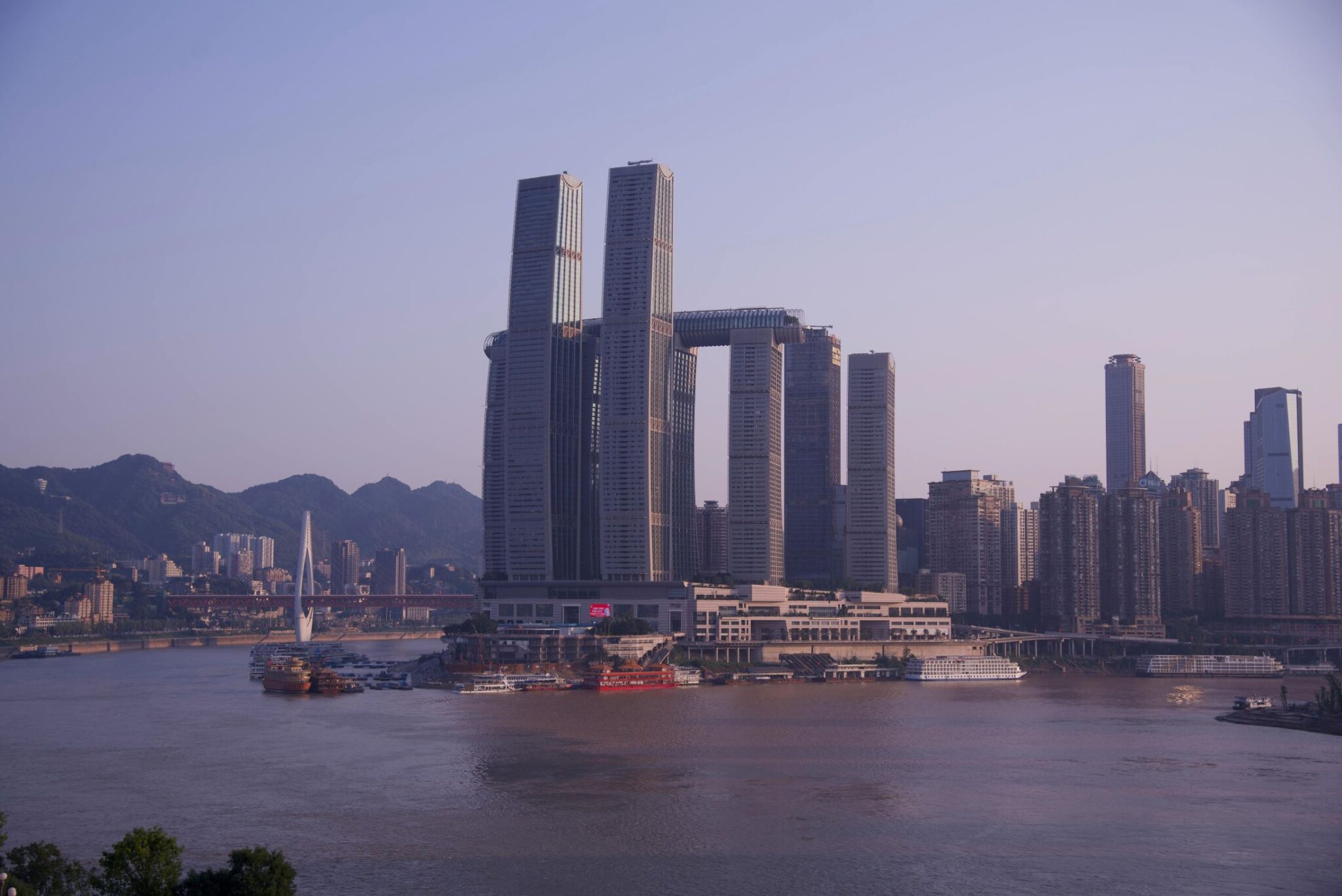
Having a basic understanding of Chongqing’s geography is beneficial for your visit. The name “Chongqing” translates to the location where the Jialing River and the Yangtze River converge. This makes a fitting symbol for Chongqing’s famous Yuanyang (鸳鸯) hot pot, which has one side with spicy broth and the other with a mild base. You’ll uncover interesting insights like this throughout your journey in Chongqing.
Chongqing’s unique landscape is characterized by its rivers and mountainous terrain. As you plan your travel itinerary, keep in mind the three main areas to explore: Yuzhong (渝中区), situated at the confluence of the two rivers; Liangjiang New Area (两江新区), located on the north side and home to the airport; and Nanan District (南岸区), which you can reach via cable car from Jiefangbei or by metro.
To save time on transportation, I recommend focusing on one area each day—either the confluence, the north, or the south.
Where to Stay in Chongqing Urban Area
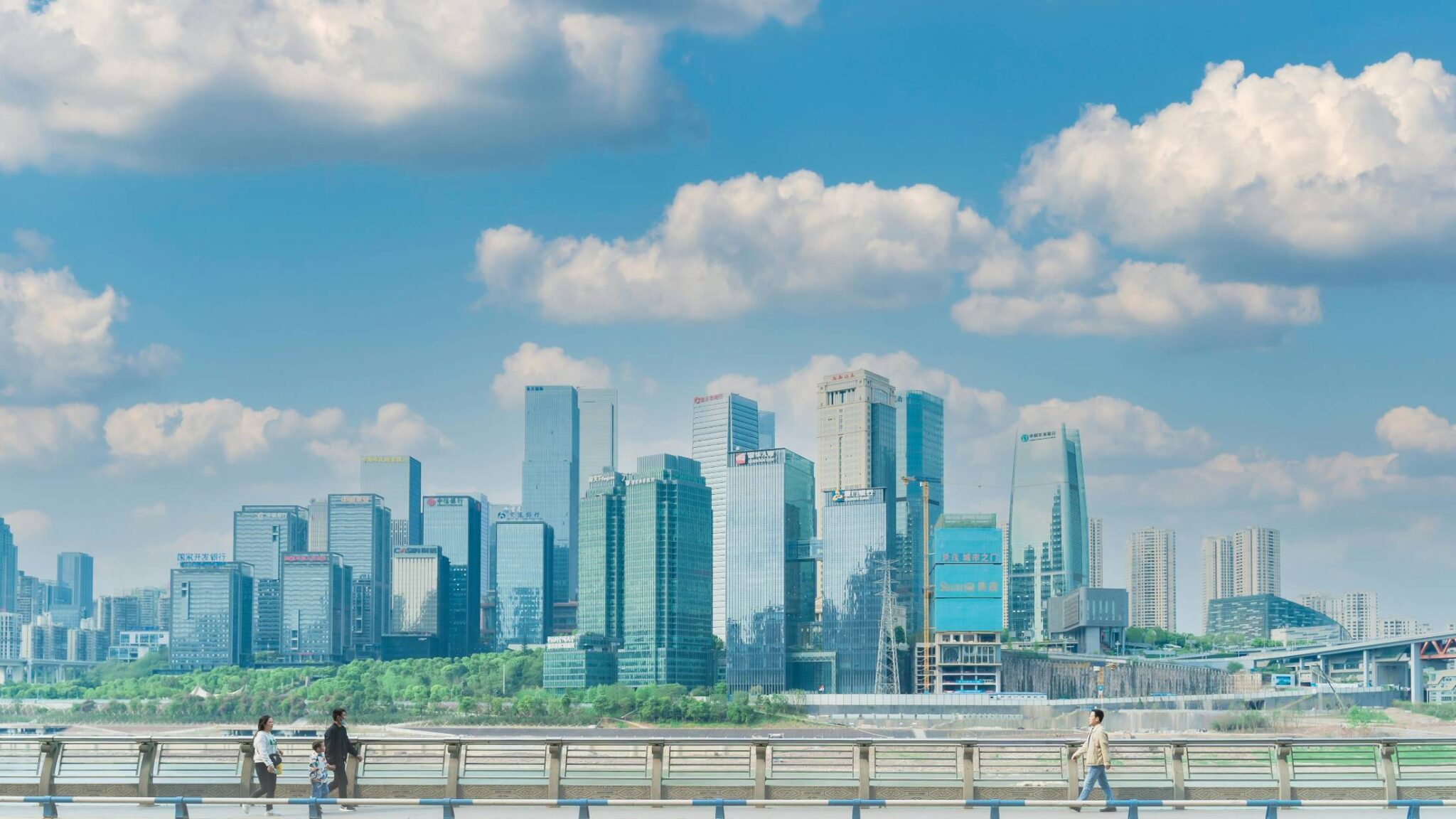
I recommend staying near shopping centers or in the Central Business District (CBD) for convenience, especially if it’s your first time in Chongqing and you’re still getting to know the city.
Jiefangbei is an excellent location because it is close to attractions like Hongya Cave and Raffles City. However, it can be quite touristy, and hotel prices tend to be high, especially during peak seasons.
For a more budget-friendly option, consider staying near Times Paradise Walk (时代天街), close to Shiyou Road (石油路). This shopping center is one of the largest in Chongqing and usually offers hotel prices ranging from 120 to 180 Yuan per night. It’s also easily accessible by metro, with a 30-minute ride to Jiefangbei or Ciqikou Porcelain Port. So far, this has been my favorite place to book hotels.
Day 1: Arriving in Chongqing
By Flight
Upon arriving at Chongqing Jiangbei International Airport (CKG), located about 21 km from the city center, you’ll land at Terminal 2, Terminal 3A, or the newly operational Terminal 3B, connected to 3A via an airport transit train.
From Terminal 3, take Metro Line 10 to reach Jiefangbei. From Terminal 2, use Light Rail Line 3 to get to the city center. Terminal 1 is reserved primarily for special passengers and not in regular use.
For taxis, head to the designated pick-up area outside the terminals. Ignore individuals soliciting rides at the entrance, as these may be unlicensed private cars charging exorbitant fares. Taxis are plentiful just steps from the exit.
By Train
Chongqing has 28 railway stations (and more to come), highlighting its vastness. In the city center, the three major stations are Chongqing West, North, and East Railway Stations. Metro and taxi services are readily available at these stations.
See the Train That Goes Through a Building

One of the most viral videos you’ll find on social media about Chongqing features the Liziba station, where a train passes through a building.
While this may not seem remarkable to locals, it draws considerable attention from visitors. Expect crowds when you arrive; to see the spectacle, head down to the first floor, cross the street, and go to the viewing deck.
You’ll see many people holding their phones aloft, trying to capture creative angles of the train!
Learn Modern Chongqing History at the Three Gorges Museum
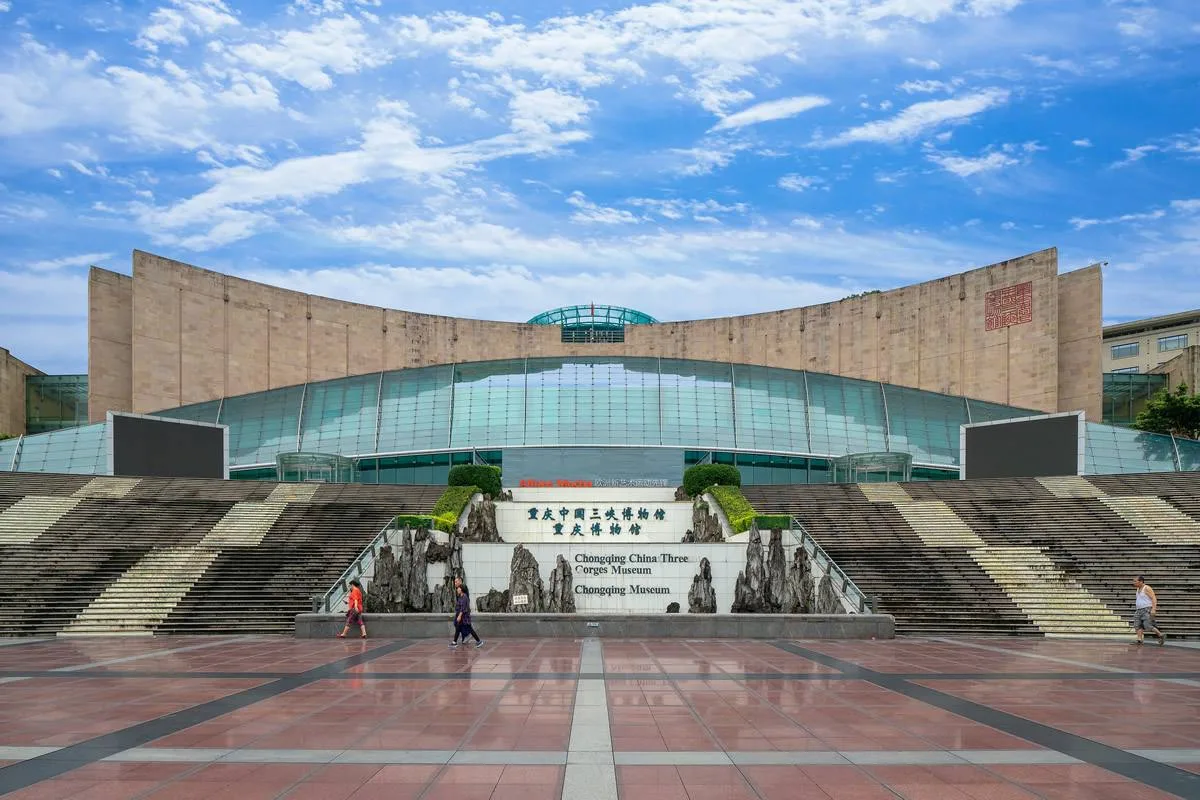
Everyone is familiar with China’s monumental projects, ranging from high-speed trains to the world’s largest airport. The Three Gorges Museum highlights the history and significant events related to the construction of the Three Gorges Dam.
For those who may not know, the Three Gorges Dam is the largest hydroelectric dam in the world, located on the Yangtze River near Yichang in Hubei province. It produces 95 terawatt-hours of electricity, which is enough to power millions of homes! However, the construction of the dam resulted in the flooding of 13 cities, 140 towns, and over 1,000 villages, displacing approximately 90 million people.
The museum is open from Tuesday to Sunday and is closed on Mondays. It operates from 9:00 AM to 5:00 PM, with the last entry allowed at 4:00 PM.
Visit Chongqing People’s Auditorium
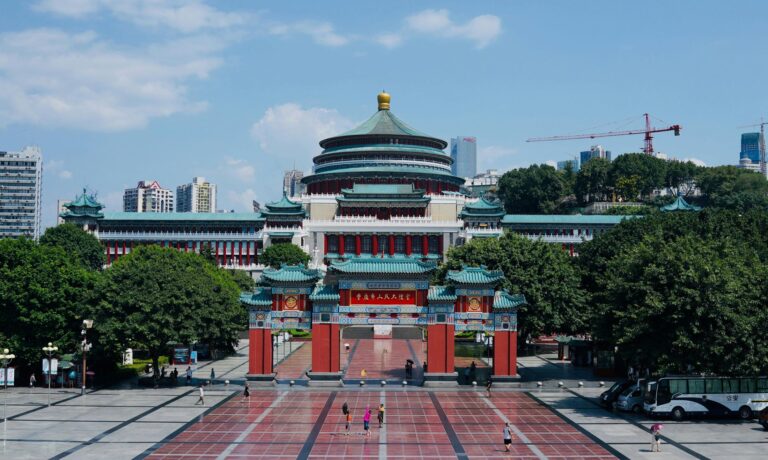
The Chongqing People’s Auditorium is a large hall designed for important meetings and events. Situated in the Yuzhong district, this building is an iconic attraction in Chongqing. I truly admire this grand structure; it is both massive and unique, serving as a venue for government meetings and significant events. Admission tickets are priced at 10 Yuan.
Unveil the Fun of Guanyinqiao
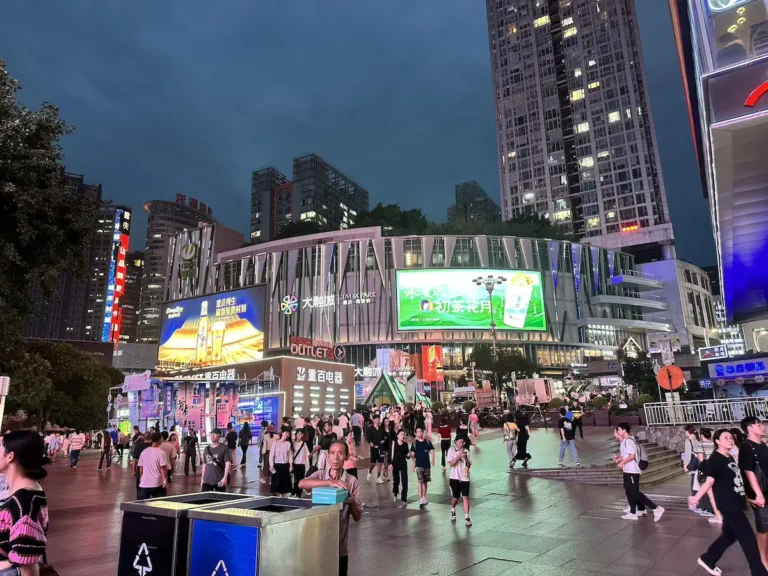
Guanyinqiao is a popular shopping square among younger generations. After visiting the People’s Auditorium, head back to the metro station, take Line 2 towards Niujiaotuo (牛角沱), and transfer to Line 3 to reach Guanyinqiao. This shopping street offers not just retail therapy but also dining options, from fine dining to food courts filled with delicious treats.
After dinner, don’t forget to snap a photo by the giant LED screen that says “This is Chongqing.” It’s an iconic spot for check-ins!
Day 2: Start with a Shancheng Trail Walk
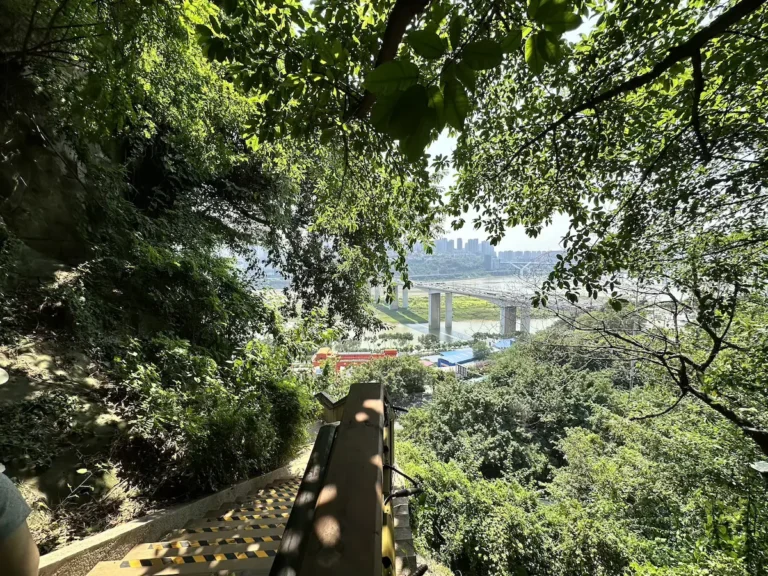
The name “Shancheng” means “mountain city,” and Chongqing truly reflects that identity. This trail runs along the mountainside, offering views of the Yangtze River and Nanan district. It provides a glimpse into the daily lives of Chongqing locals before modernization. Mid-mountain Cliff Trail is another similar trail, but it offers a view of Jialing River and Liangjiang New Area.
To start, take the metro from Times Paradise Walk to Qi Xing Gang station (七星岗), Exit 2. Once outside, turn left at the first intersection towards Xinglong Street (兴隆街). Look for a tiny entrance on your right, then follow the path to your left.
Enjoy Shibati (Eighteen Stairs)
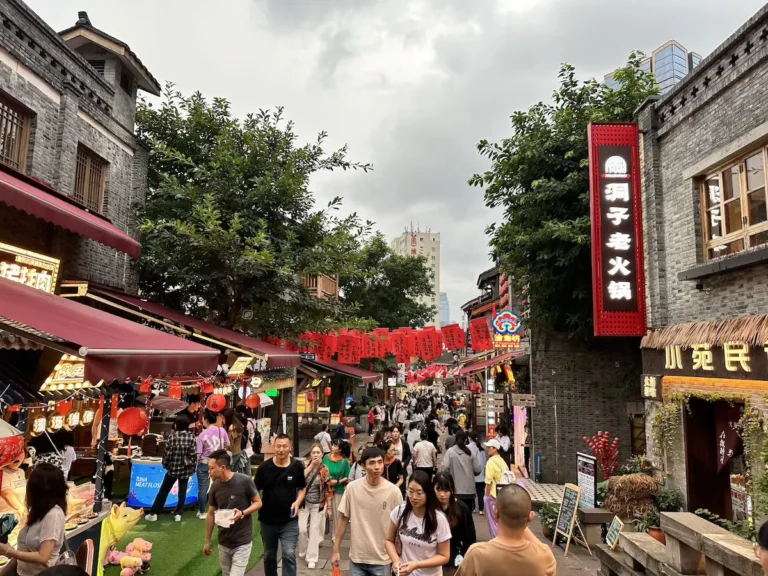
After your walk, you should be near Shibati. This historic site marks where Chongqing’s first residential settlement began (BC 316) due to its proximity to the river. Shibati features over 200 steps connecting the upper and lower cities.
Explore Jiefangbei’s Food Streets
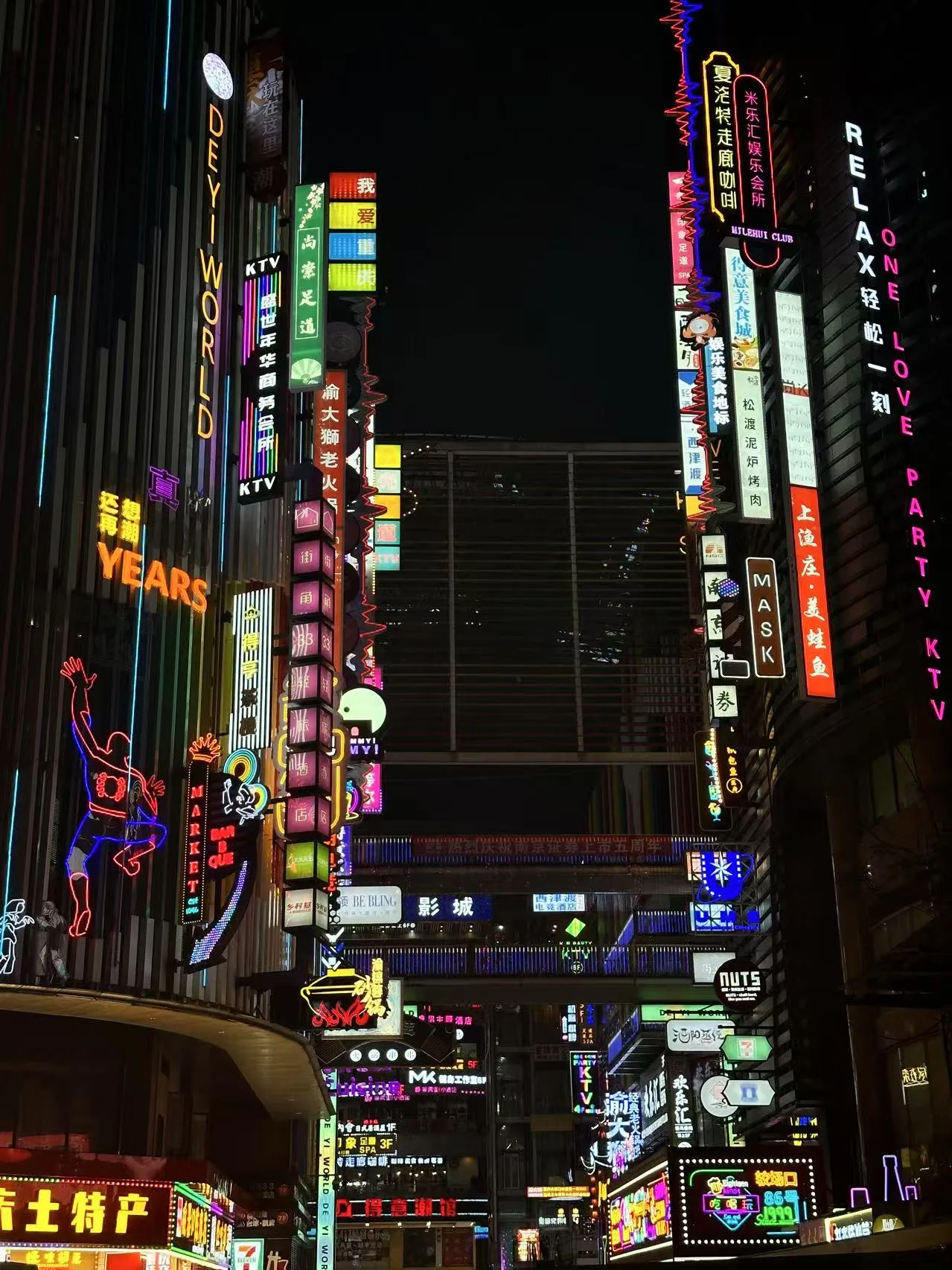
Once you finish at Shibati, walk up the stairs to Jiaochangkou (较场口). If you need help finding it, search for Jiaochangkou station on Chongqing Metro Line 2. Here, you’ll be amazed by the variety of Chongqing snacks, from Suanlafen (酸辣粉) to spicy hotpot bases and BBQ skewers (麻辣串). There are numerous vendors and food courts to discover, so prepare your appetite!
Take a Picture with Chongqing Liberation Monument
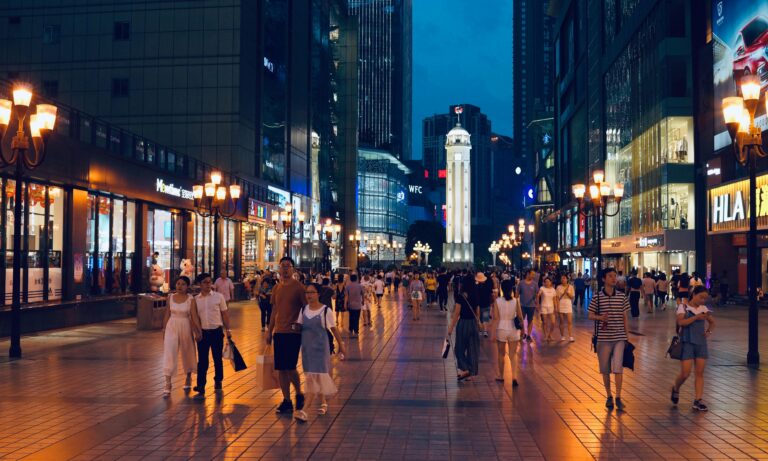
A must-visit is the Chongqing Liberation Monument in the Jiefangbei Central Business District. This iconic structure, once the tallest building in Chongqing, stands 24 meters tall with a diameter of 4 meters. It commemorates the sacrifices made during the war against Japan. If you need one photo to prove you visited Chongqing, this is it!
See the Past and Future at Luohan Temple
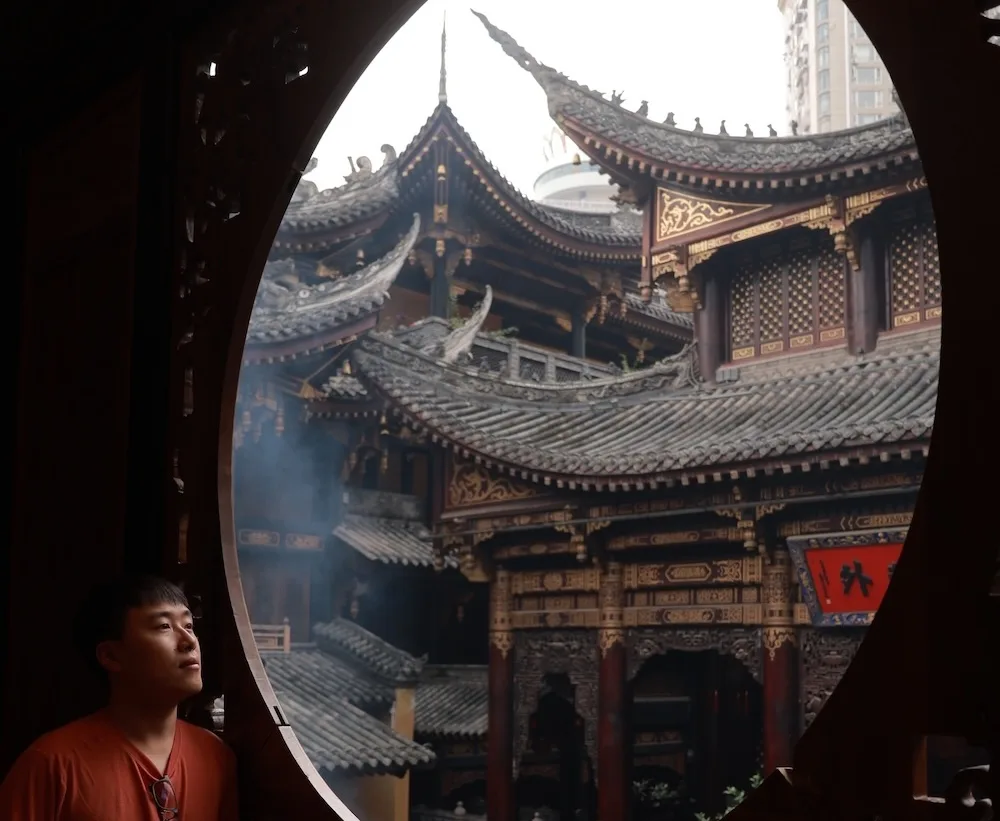
Built during the Song dynasty (1064-1067), Luohan Temple has weathered the years, even surviving a bombing in 1942. This site beautifully juxtaposes ancient architecture with modern office buildings, offering a unique glimpse into Chongqing’s history.
Enjoy the Beautiful Night View of Chongqing
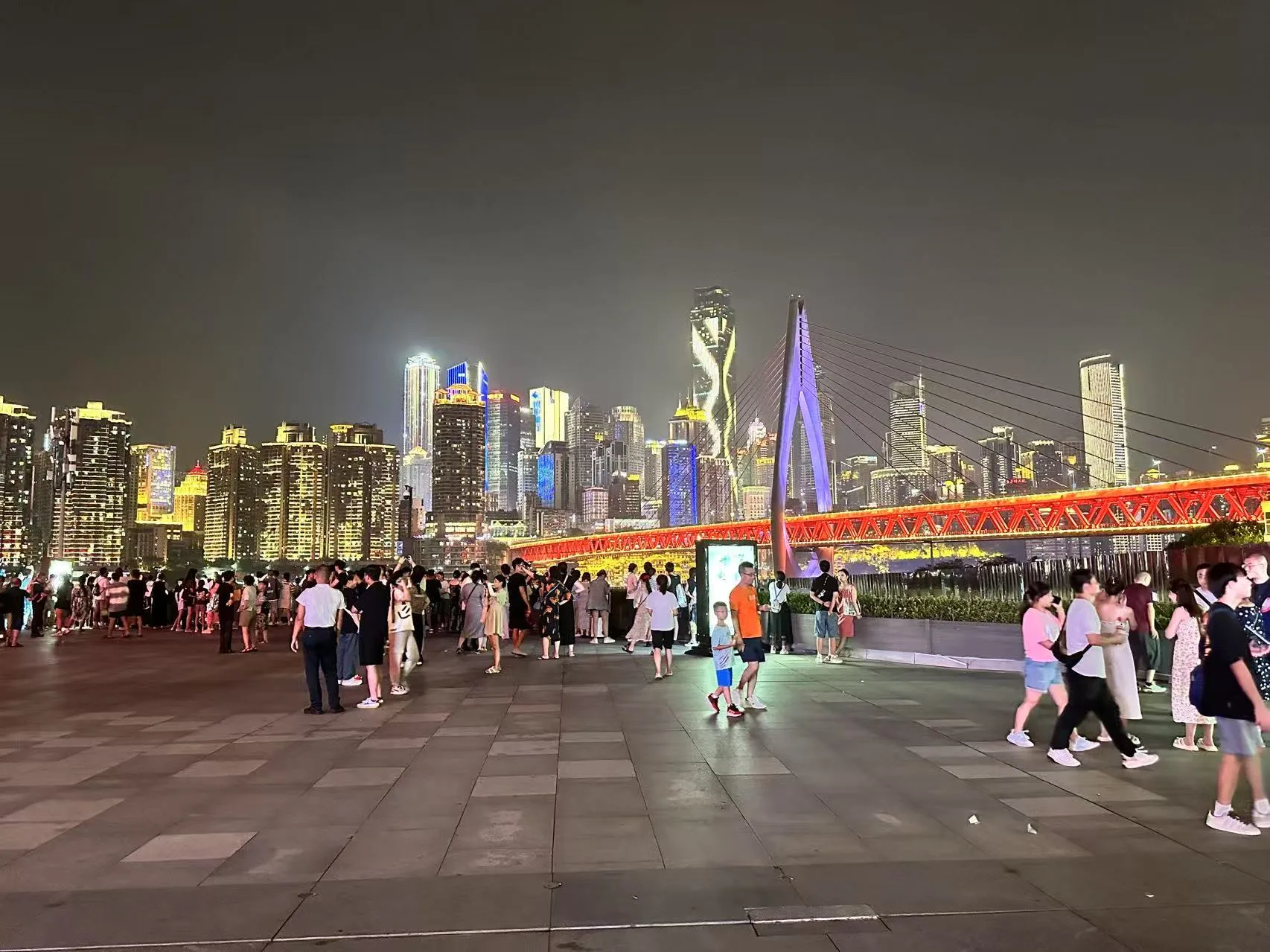
Chongqing transforms at night, and the best view is from the Chongqing Grand Theater. From Luohan Temple, head to Xiaoshizi metro station (小什字地铁站), take Line 6, and get off at the Grand Theater station (大剧院站). Follow the signs to the square in front of the theatre for stunning night photography opportunities.
Discover Hongya Cave
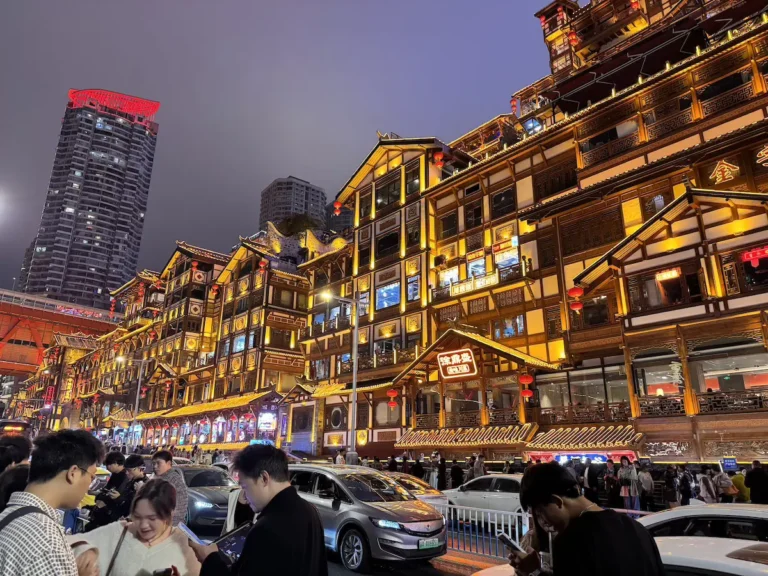
After visiting the Grand Theater, walk to Qiangsimen Bridge. As you cross, you’ll get a magnificent view of Hongya Cave. This scenic route allows you to appreciate its grandeur fully. Be prepared for crowds as you approach; follow the path and turn right to enter. Hongya Cave is free to explore, and you can enjoy various shops as you wander through its levels.
Day 3: See the Pandas at Chongqing Zoo
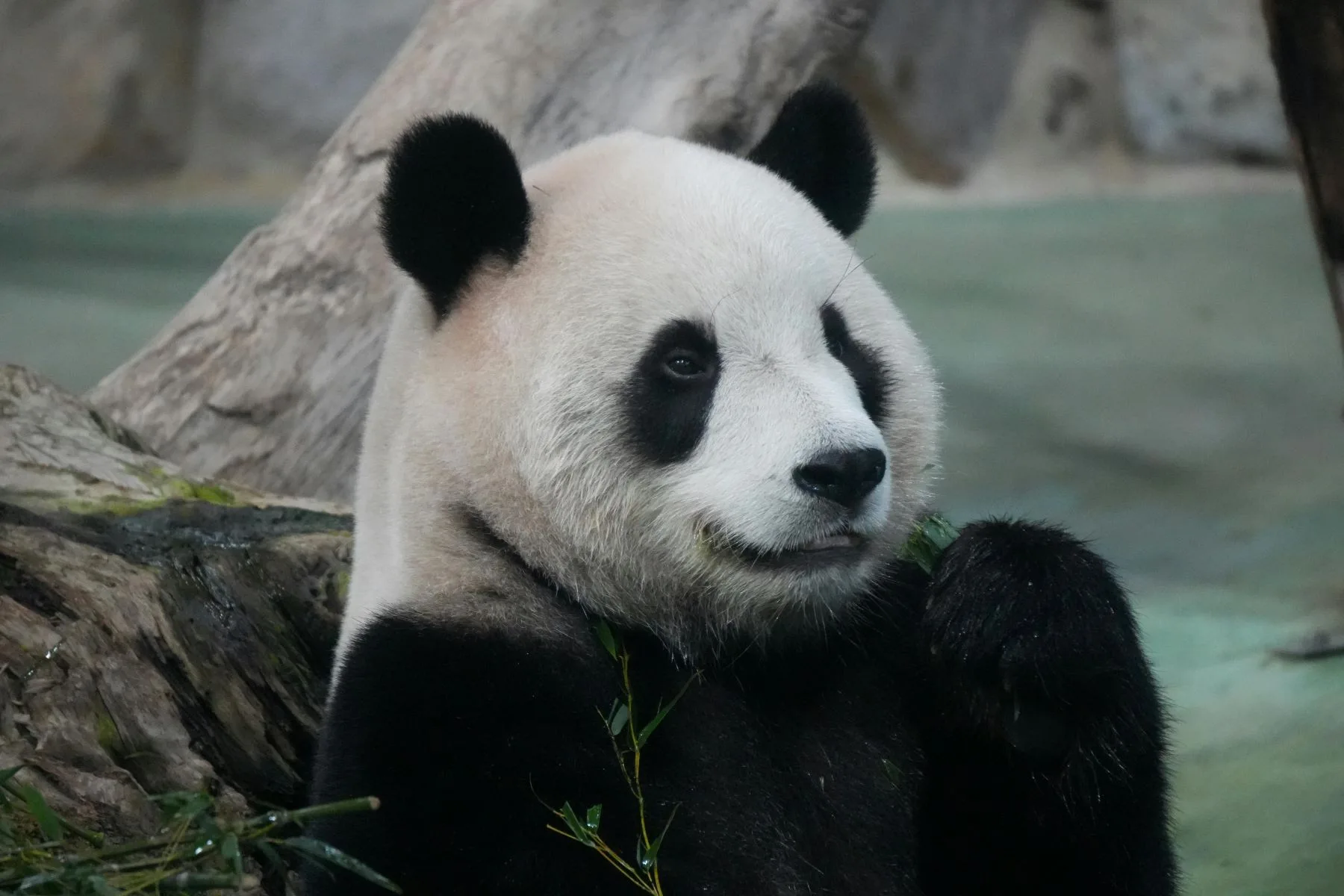
If you love pandas, don’t miss the chance to see them at Chongqing Zoo! The zoo gained fame with a viral video featuring four cute pandas at a Mahjong table. You can reach the zoo via Metro Line 2, and there’s an entrance fee. Besides pandas, you’ll find hippos, zebras, and various birds. Allocate 1-2 hours for your visit.
Learn Some History at Zhazidong and Baigongguan
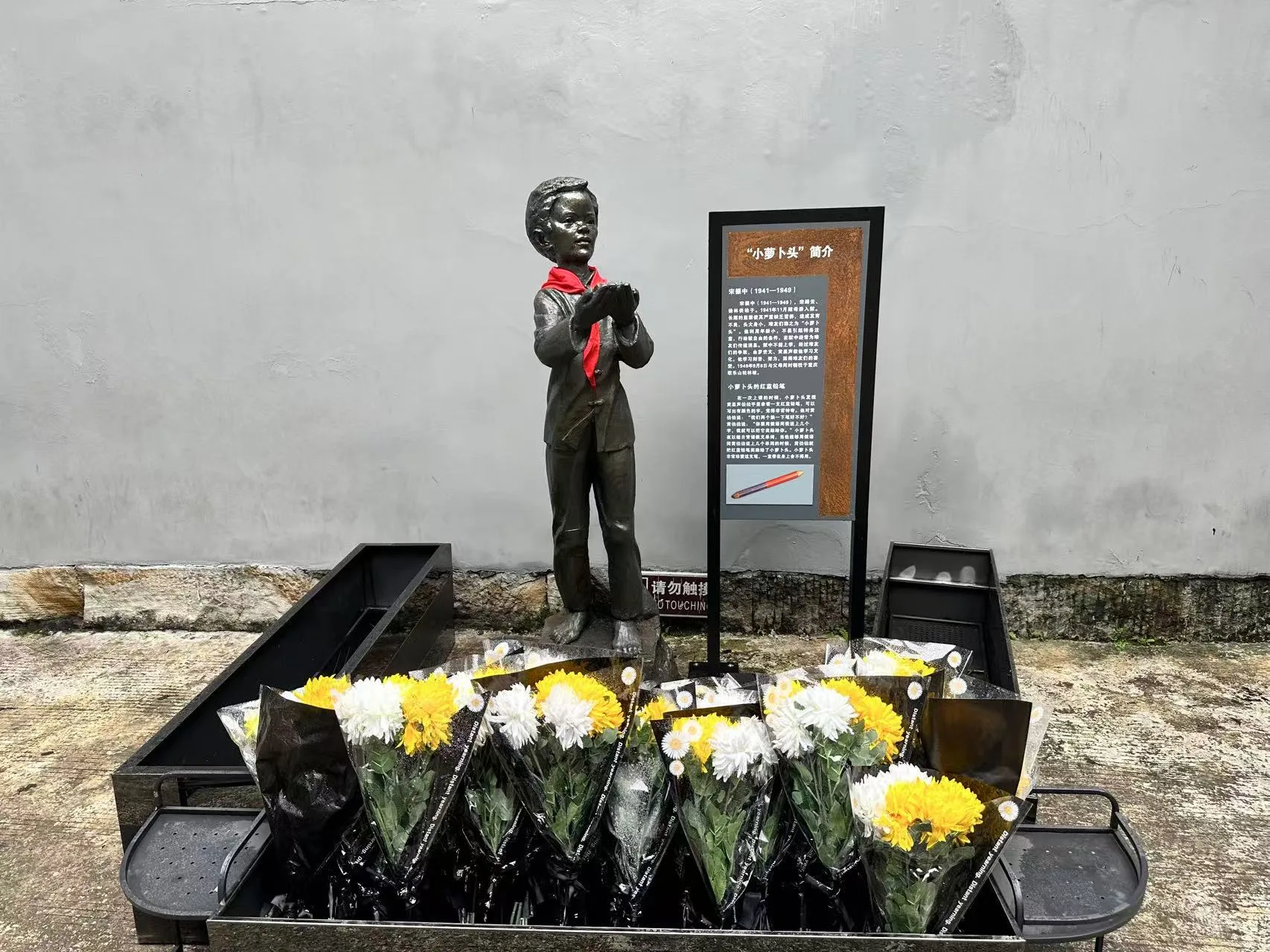
Baigongguan (白公馆) and Zhazidong (渣滓洞) were used as concentration camps by the Kuomintang for captured communist politicians. Zhazidong was originally a coal mine, and the name “Zhazi” means garbage. The site features an interrogation room with tools used for torture—an eye-opening experience that emphasizes the weight of history.
See Ciqikou Porcelain Port
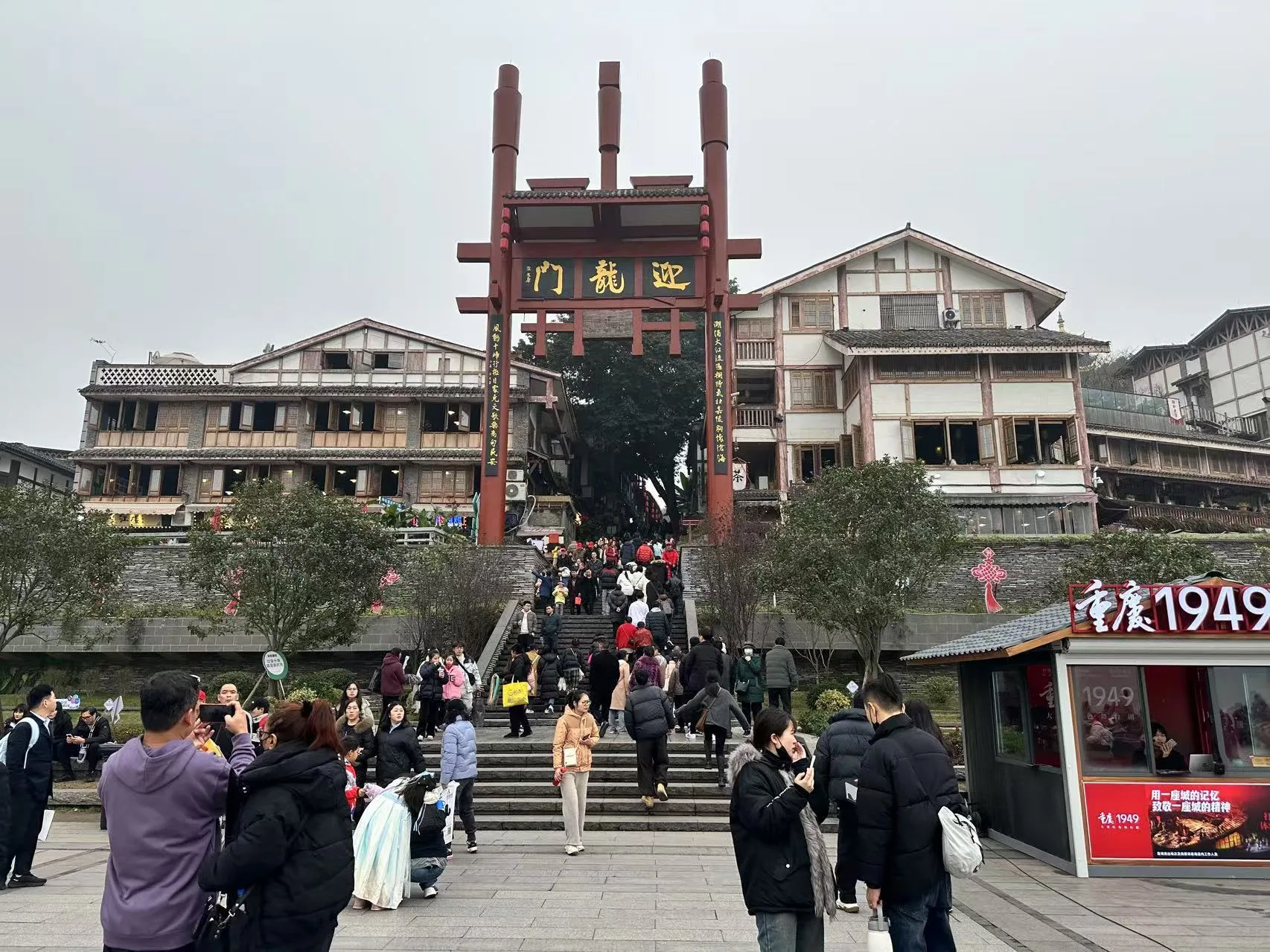
Ciqikou, also known as the “porcelain port,” is one of the oldest towns in Chongqing, with origins dating back to the Ming dynasty (1368–1644). Historically, it was a bustling port famous for its porcelain trade and production. The town is poetically described as having “one thousand people greet each other during the day and ten thousand lamps flicker at night.” Both locals and travelers visit Ciqikou to experience its steep, narrow pedestrian streets and relive old Chongqing’s charm.
Do a Little Hiking at Laojundong

Laojundong is a serene spot to experience Chinese Taoism and enjoy breathtaking views overlooking Jiefangbei. If you’re familiar with Feng Shui (风水), you’ll appreciate the significance of having temples on Nanshan Mountain.
Expect some hiking as Laojundong involves navigating stairs, so bring plenty of water and be ready for 2-4 hours of exploration.
Final Thoughts
This 3-day itinerary allows you to explore the top attractions in Chongqing. If you plan to extend your stay, check out my other experiences in the urban area and beyond. Remember, Chongqing is a vast municipality, and there’s still much more to discover, so stay curious!

Discover Chongqing with Haonan!
From mountains to grasslands, Chongqing has something to offer for everyone.
Start planning, find an inspiration, or search for a place.
Or follow us on social media.

